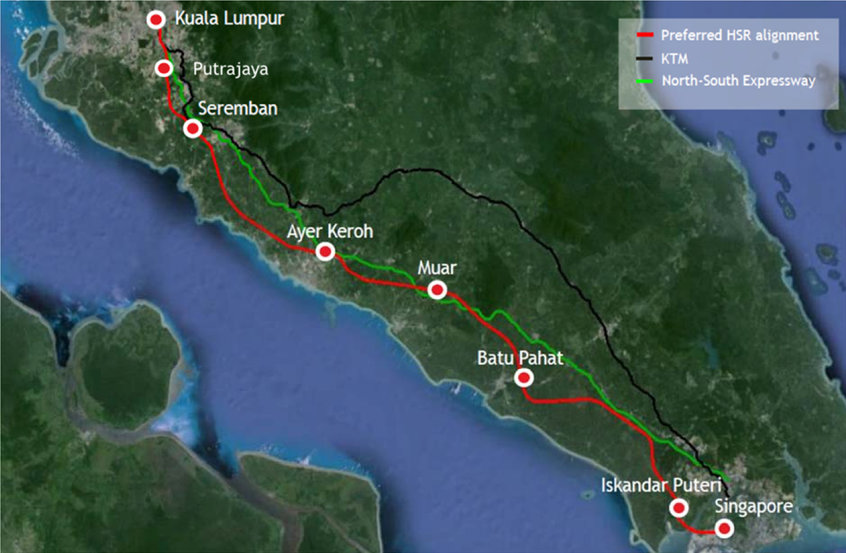Global firms will be watching Malaysia and Singapore intently this month after the signing yesterday of a memorandum of understanding (MOU) committing the two states to move forward on building a long-anticipated high-speed rail link.
Heavyweights in China and Japan are certain to be drawn to the massive scheme that will see trains, running at more than 300km/h, cut the tortuous journey between Kuala Lumpur and Singapore from up to six hours now to just 90 minutes when the line opens – it is hoped – in 2026.
Next month a bilateral planning team will invite international bids for a development partner to advise on the project, which will see six new stations built along the railway’s route, as well as two new termini, one each in Kuala Lumpur and Singapore, which are 309km apart as the crow flies.
The prime ministers of both countries witnessed yesterday’s MOU signing by Malaysia’s Land Public Transport Commission (SPAD) and Singapore’s Land Transport Authority (LTA).
It follows extensive discussions between the two states since the project was first announced in February 2013.
At the end of last year the global rail industry responded enthusiastically to a request for feedback on the project, which officials have called “exciting and iconic”. At that time 98 submissions poured in from financiers, engineers, equipment makers and other players.
A joint statement yesterday said the MOU captures the key points of agreement on the project, including technical parameters, the commercial model, customs clearance, safety and security, the regulatory framework, as well as project management.
Next to come is a legally-binding bilateral agreement, which the statement said is due to be signed by both governments “towards the end of this year”.
The MOU committed Malaysia and Singapore to make all project tenders open, fair and transparent, “so as to encourage participation from technology and service providers worldwide”.
International bids sought
Each country will build and maintain the infrastructure and stations within their own borders. In Malaysia this will be handled by MyHSR Corporation, and in Singapore, by LTA.

The railway will have eight stations along its route (LTA)
Officials will tender internationally for the job of supplying and maintaining the high-speed trains and associated systems, while two train operating companies will be appointed to operate the rail services. One will operate the cross-border services, while another will run domestic services within Malaysia.
The railway’s Malaysian terminus in Kuala Lumpur will be sited at the new, 196-hectare district of Bandar Malaysia where, earlier this year, China Railway Group announced it would invest $2bn in a regional headquarters complex.
Six intermediate stations will be built between Kuala Lumpur and Singapore at Putrajaya, Seremban, Ayer Keroh, Muar, Batu Pahat and Iskandar Puteri. These will be designed to integrate with the local public transport systems.
The trains will run at a top speed of more than 300km/h.
Customs checkpoints will be located at Singapore, Iskandar Puteri and Kuala Lumpur. The governments agreed to form a joint committee to manage cross-border aspects of the project.
They will also set up a joint project team to coordinate project planning and development. This team will call for an international tender next month to appoint a “joint development partner” to provide technical support to both countries on the project.
Both governments agreed to work towards opening the line “by around 2026”.
Malaysia’s SPAD is the planning, regulatory and enforcement authority for all land public transport matters in Peninsular Malaysia. Also in Malaysia, MyHSR Corporation was incorporated in 2015 as the project delivery vehicle for the rail project. It is wholly owned by the state’s Ministry of Finance.
Top image: The red line shows the preferred alignment of the new high-speed railway, with the much slower existing railway, KTM, outlined in black (LTA/SPAD)






